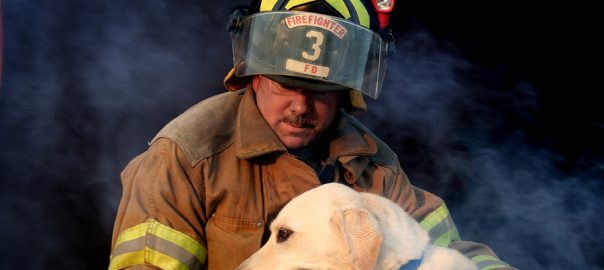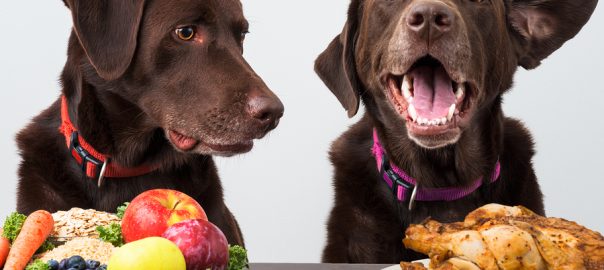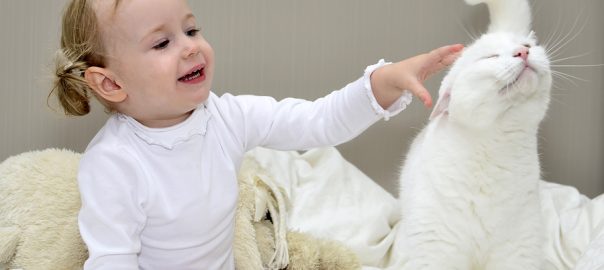Are there secrets to health and happiness locked in your pet’s poop?
While I was researching an article on the possible link between anxiety and the bacteria living in our pets’ digestive tracts, I had the opportunity to speak with Dr. Gail Czarnecki-Maulden, who holds a PhD in animal nutrition and is a senior research nutritionist for Purina. (Note: I work with Purina on a number of educational projects, although this is not a sponsored post.)
Dr. Czarnecki-Maulden is known as the “Queen of Poop” due to her interest in understanding the relationship between pet health and, well… poop! What she shared with me was fascinating, and I thought you would think so, too.
There’s an idea out there that the best food is the one that produces the least poop. (Which seems to suggest the best food would be one that produced no poop. 😉 What can you really learn from a pet’s poop?
“Less poop” was a huge trend about 30 years ago, with many pet owners going for the smaller, harder poop. The fact is, poop that’s too hard and too dry is actually not healthy. It’s too difficult to expel it. You need some fiber to encourage the growth of the right bacteria.
Those bacteria in the gut aren’t just there to hang out. They help us digest our food, they make vitamins, they send signals to our brains. There is constant signaling going on between gut bacteria and the brain. We think that’s one of the things that controls food cravings in people, signaling when you feel hungry and need to eat, when to stop eating, and maybe even cravings for certain types of foods.
Also, when you look at poop you can tell a lot about nutrient absorption. How much of the nutrients does the animal eat, and how much comes back out again? Certain bacteria even produce nutrients that help feed our intestinal cells. You can look at the levels of these nutrients in the feces to see how much is being produced by the bacteria. You can also look at the types of bacteria in the poop to determine whether they are producing vitamins for you.
The gut is also the first line of defense against a lot of pathogens. There are immune cells in the digestive tract, so you have an active immune system in your gut. Feces can help tell you how healthy the immune system is.
Older animals will usually see a decrease in good bacteria and an increase in bad, so you may need to adjust the diet to compensate for that.
What can a veterinarian learn about pet health through fecal testing?
Right now, what testing can tell you is the basics: Is there a bacterial infection, pathogenic bacteria and parasites, the presence of blood, the color of feces.
In the future, I think we’ll have tests for non-pathogenic bacteria, and be able to look at a puppy and kitten’s microbiome (the population of bacteria living in the gut) and predict whether this puppy or kitten will be more susceptible to obesity, digest issues, or other diseases when they’re older. We’re not quite there yet, but there will be some very exciting things in the veterinary area in the future.
Even now, in research testing we can predict in a kitten whether they’ll be overweight in adulthood. The question is, what do you do about it? There will probably be commercially available diagnostic tests in the future. We’ll see a lot more like this in the next few years, including what we can do to intervene.
What can pet owners learn from what they can observe at home?
Number one, if you see blood, call your veterinarian instead of going onto Facebook or consulting Dr. Google. Call your vet, then go in right away. Blood in the stool is never a good thing.
Look at the fecal score chart. What is the score? In our chart, a score of 1 is too hard. That would indicate the pet is constipated. Two and 3 are ideal. Above that, the stool is too soft.
Look at the pet’s score and also how consistent it is day to day; a healthy digestive system is the same from day to day. A lot of variation in the score indicates the digestive tract is not functioning ideally, particularly from the microflora balance perspective. If that’s the case, you may need to adjust the diet or add a probiotic.
What difference do different types of food make on a pet’s feces, and what are the health implications?
People tend not to think about this, but when you’re eating food, you’re not just feeding yourself. You’re also feeding the bacteria living in your gut. You want to feed the good bacteria but not the bad.
Good bacteria make vitamins and help modulate immune system. What you want to do is feed the types of foods that will make sure you have the right bacterial balance. I always like to feed something with some fiber in there, unless there’s some medical issue that would contraindicate that.
The bacteria eat the fiber. They ferment it in the gut, break down the residue the body can’t digest, then digest it and use the nutrients for themselves. They produce nutrients used by the intestinal cells. You can actually bump up mineral absorption by feeding the bacteria that help with this process. There was a slogan in an old Purina ad that said, “Invite 6 million friends to dinner.” We were telling you to feed the bacteria that help feed you, by feeding them with a prebiotic fiber, a specific type of fiber used by beneficial bacteria in the gut as an energy source.
We really need more consumer awareness about probiotics. What you’d want to look for is the manufacturer is guaranteeing live bacteria in the guaranteed analysis. It’s very difficult to keep bacteria alive in pet food. The bacterial have to be in a state of suspended animation in the food so they don’t ferment the food, but instead be effective when the animals eat them.
You also need a probiotic that’s guaranteed to work. This takes more background work to see if the company actually has data on their probiotics. It can be a little difficult to figure out, because you can have two bacteria with exactly the same name that do different things. For example, we have data on our strain of E. faecium in the Fortiflora probiotic supplement, but doesn’t mean other strains of E. faecium do the same thing. So you need to go to the manufacturer’s website and see what, if any, proof they have for their products showing they work, as well as a guarantee that the bacteria remain alive to end of shelf life, not just the time of manufacture.
Are there any other factors (exercise, for instance) that may affect pets’ poop and associated health issues?
Especially with bacteria, whatever you start out with will influence how you make it through life. Some animals are often sick and others are really resilient, and we think some of this has to do with the microbiome. Part might be genetic, part what they got from mom at birth.
Anything else you’d like to say that I didn’t ask?
Probably one of the most important things a pet owner can do is know what’s normal for their pet’s stool, and be aware of changes.
And that’s the scoop from the Queen of Poop!




